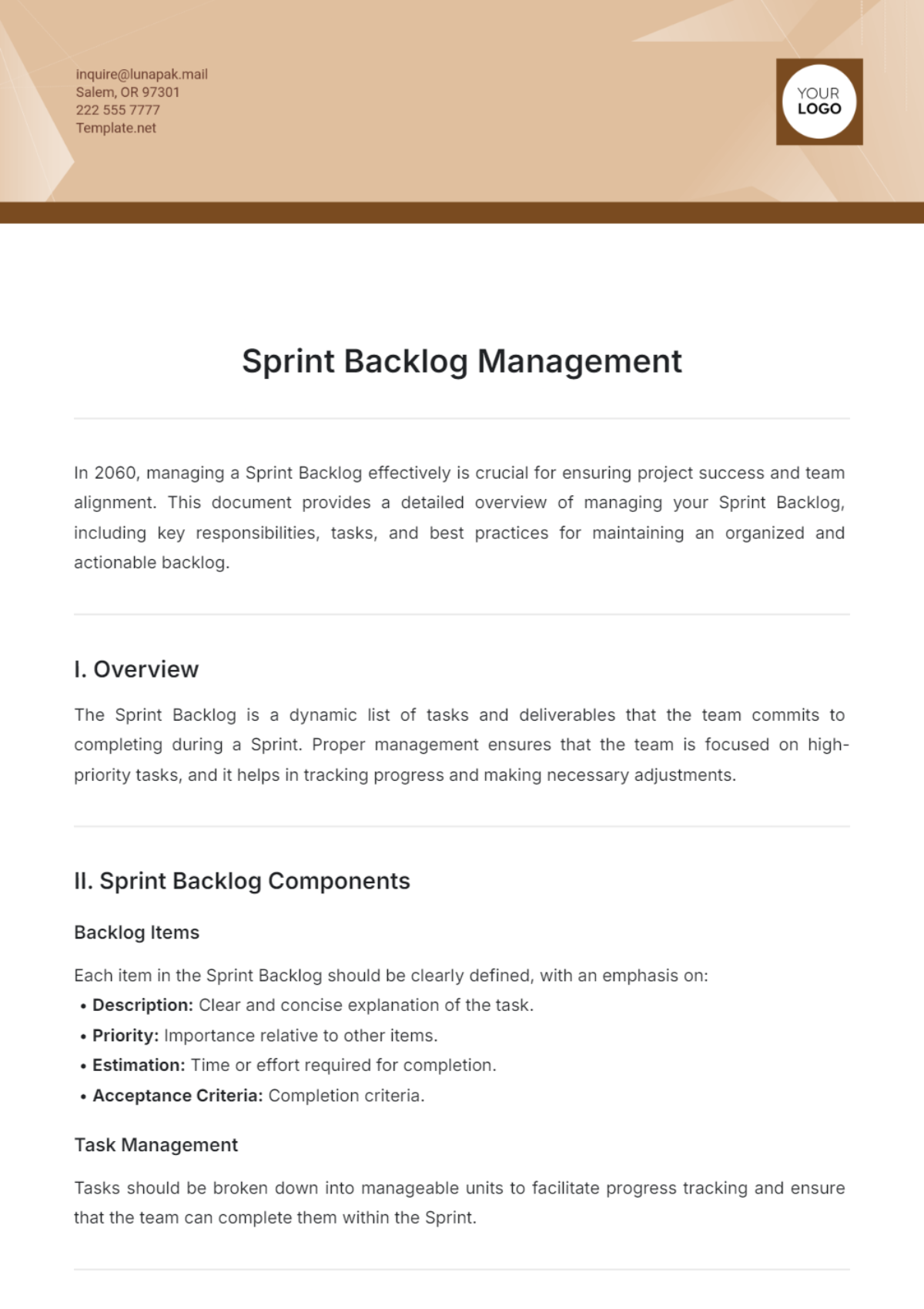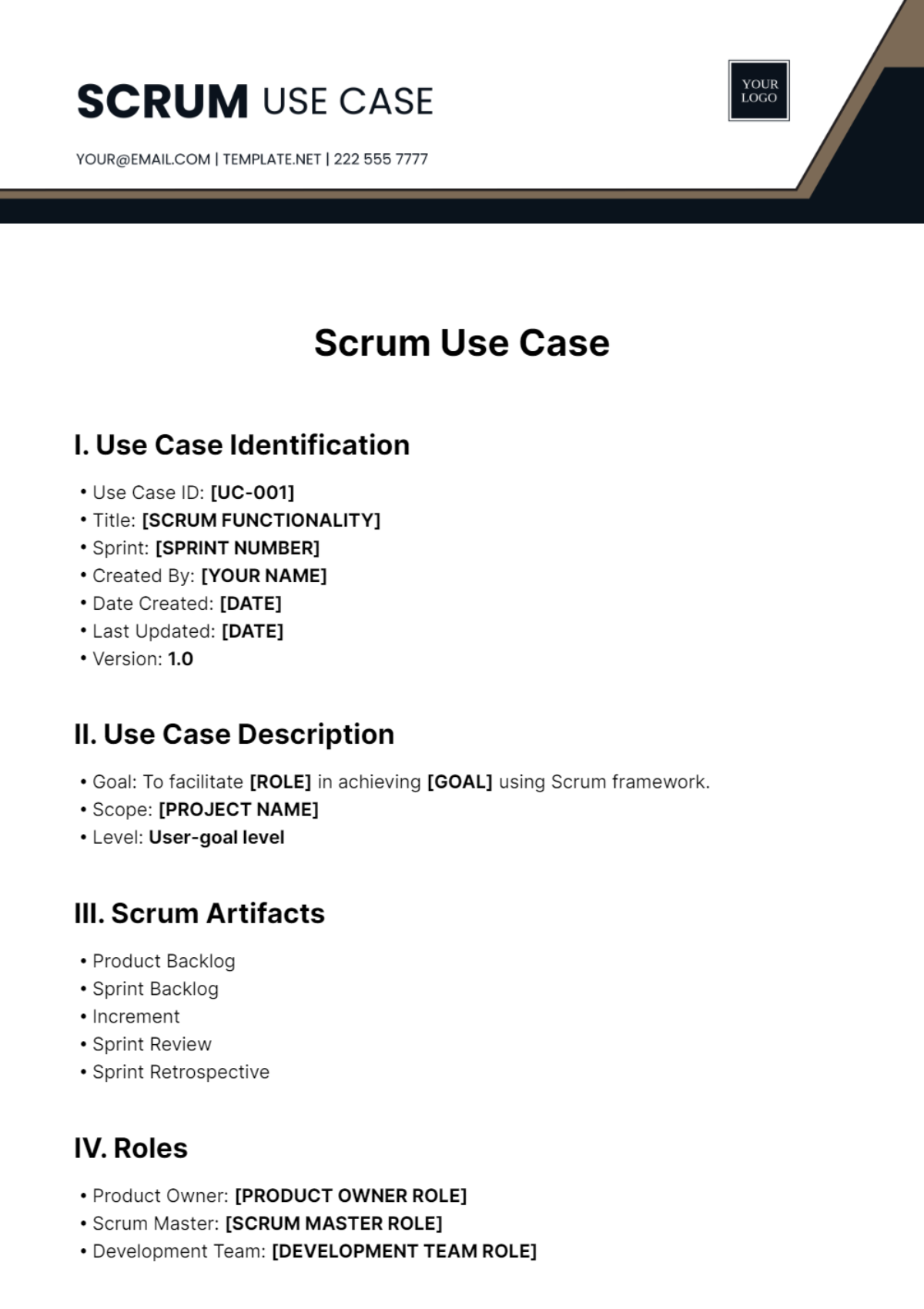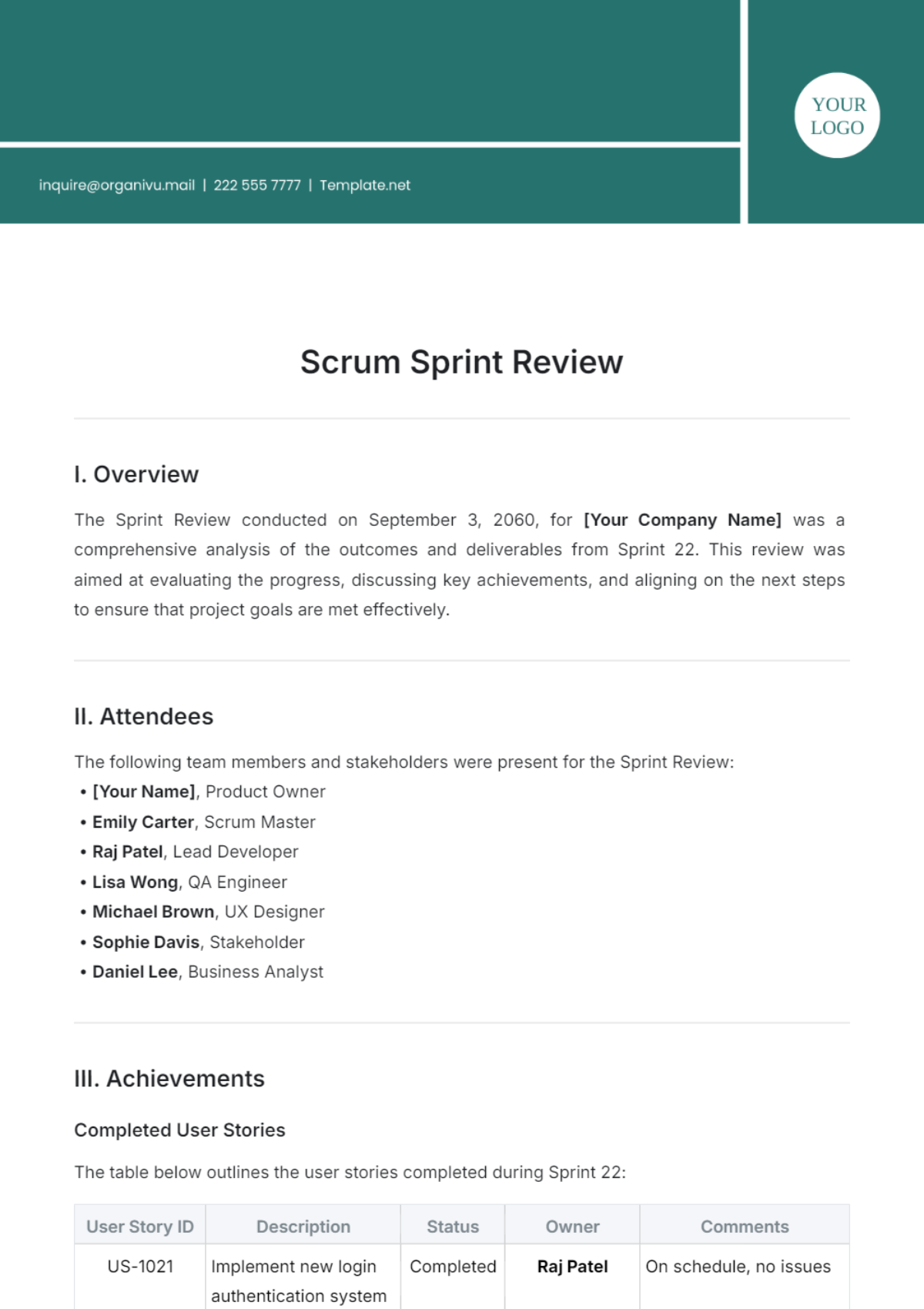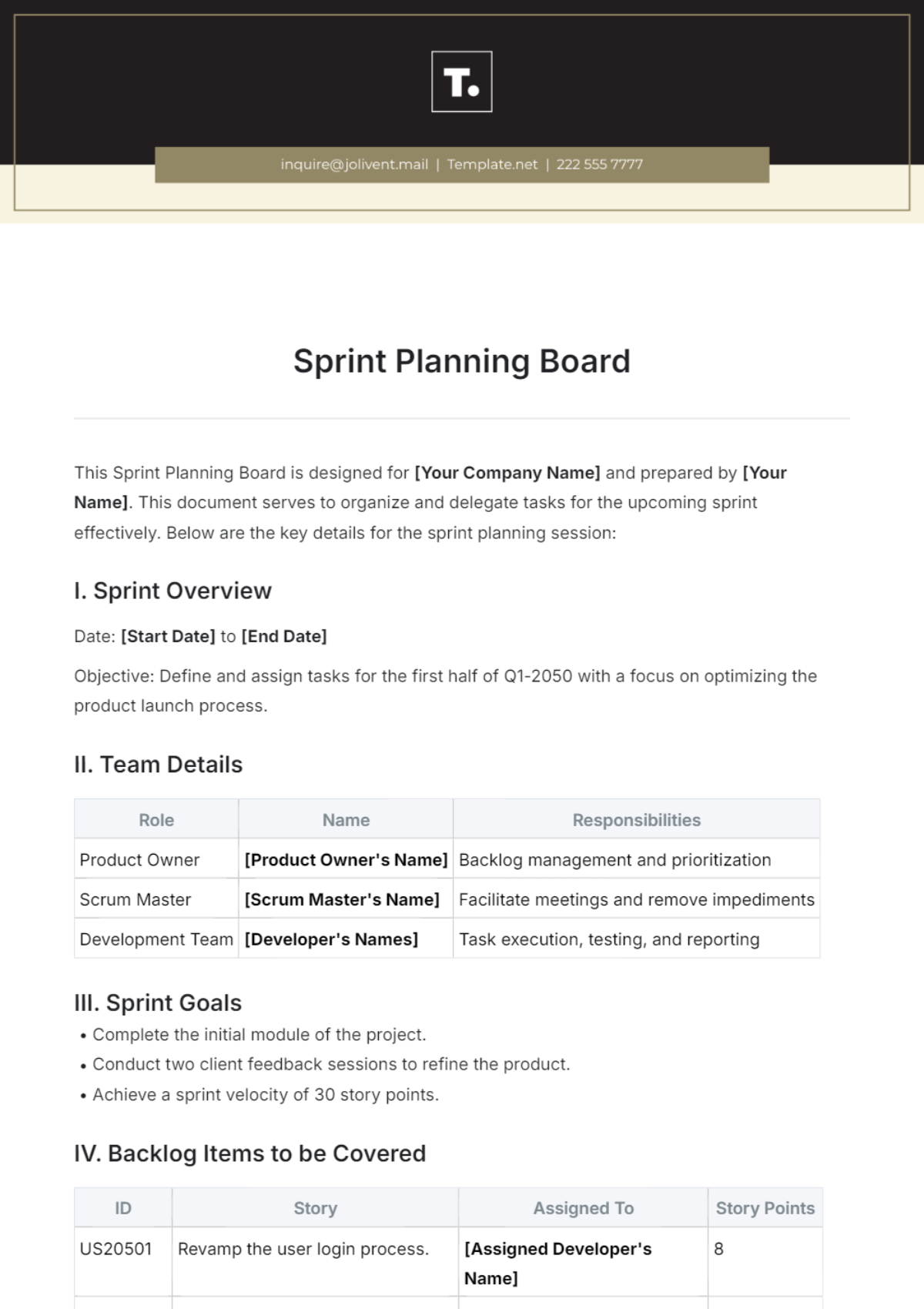Scrum Methodology
Introduction to Scrum
Scrum is an agile framework designed to help teams tackle complex projects by breaking them down into manageable increments. It emphasizes iterative progress through Sprints, regular feedback, and the ability to adapt to changing requirements. Scrum is widely used in software development but applies to any complex, innovative scope of work.
Principles
Transparency:
All processes and decisions must be transparent to the team and stakeholders. This is achieved by maintaining clear and visible communication channels, like shared dashboards, and ensuring that everyone understands the project's current state.
Inspection:
Scrum artifacts and progress toward Sprint Goals are inspected regularly to detect variances early. For example, regular Sprint Reviews and Daily Stand-ups provide opportunities to assess the project’s direction and quality.
Adaptation:
The process is adjusted as needed to correct deviations. This can involve altering the Sprint Backlog, reprioritizing tasks, or tweaking team practices based on feedback from Sprint Retrospectives.
Roles and Responsibilities
Scrum Master:
Facilitates Scrum ceremonies: Ensures that meetings such as Sprint Planning, Daily Stand-ups, Sprint Reviews, and Retrospectives are conducted effectively.
Removes obstacles: Identifies and eliminates impediments that may slow down the team’s progress, such as resource constraints or technical issues.
Coaches the team: Guides Scrum practices and fosters an environment of continuous improvement.
Monitors Scrum compliance: Ensures that the team follows Scrum principles and adapts them as necessary for the context.
Product Owner:
Manages the Product Backlog: Creates, prioritizes, and refines backlog items based on customer feedback, market changes, and business value.
Defines the product vision: Clearly articulates what the product should achieve and communicates this vision to the team and stakeholders.
Engages with stakeholders: Regularly interacts with customers, users, and other stakeholders to gather feedback and adjust the product direction.
Approves the Increment: Determines whether the product Increment meets the Definition of Done and delivers value.
Development Team:
Self-organizes: Determines how best to accomplish the work set out in the Sprint Backlog without being directed by others outside the team.
Delivers Increments: Creates potentially shippable increments of the product at the end of each Sprint.
Collaborates: Works closely with the Product Owner and Scrum Master to ensure alignment on goals and progress.
Ceremonies
Sprint Planning:
Purpose: Define the Sprint Goal and identify the Product Backlog items to be worked on during the Sprint.
Participants: Scrum Master, Product Owner, Development Team.
Agenda:
Review the Product Backlog and discuss the highest-priority items.
Agree on the Sprint Goal.
Break down the selected items into tasks and estimate their effort.
Outcome: A Sprint Backlog that details the tasks for the upcoming Sprint, with each task assigned to team members.
Daily Stand-ups:
Purpose: A quick, 15-minute meeting for team members to update each other on progress, discuss obstacles, and plan the day’s work.
Format:
Each team member answers three questions:
What did I accomplish yesterday?
What will I do today?
What obstacles are in my way?
Outcome: A synchronized team with a clear understanding of daily goals and potential impediments.
Sprint Review:
Purpose: To demonstrate the work completed during the Sprint to stakeholders and gather feedback.
Participants: Scrum Team, stakeholders, customers (if applicable).
Agenda:
Demonstrate the completed Increment.
Discuss what went well, what could be improved, and what was not completed.
Update the Product Backlog based on feedback.
Outcome: An Increment that meets the Definition of Done and stakeholder expectations, along with an updated Product Backlog.
Sprint Retrospective:
Purpose: Reflect on the Sprint process and identify areas for improvement.
Participants: Scrum Team.
Agenda:
Discuss what went well during the Sprint.
Identify what didn’t go well and why.
Propose actionable improvements for the next Sprint.
Outcome: A list of improvement actions to be implemented in the next Sprint, leading to continuous process enhancement.
Artifacts
Product Backlog:
A dynamic, ordered list of all necessary work items, including features, bugs, technical work, and knowledge acquisition. The Product Backlog is constantly refined (backlog grooming) by the Product Owner.
Example: User stories in the backlog might include "As a user, I want to reset my password so that I can regain access to my account if I forget it."
Sprint Backlog:
A set of Product Backlog items selected for the Sprint, along with a plan for delivering the product Increment and achieving the Sprint Goal.
Example: Tasks in the Sprint Backlog might include "Design the password reset page" or "Implement the email notification feature."
Increment:
The sum of all Product Backlog items completed during a Sprint and all previous Sprints. Each Increment is a step toward the Product Goal and must be in a usable condition.
Example: At the end of the Sprint, the Increment could be a functional password reset feature ready for user testing.
Sprint Workflow
Sprint Planning:
Preparation: The Product Owner ensures that the Product Backlog is prioritized and well-defined.
Task Breakdown: The Development Team breaks down selected items into smaller tasks, estimates effort (e.g., in story points), and commits to what they can deliver.
Execution:
Development: The team works on the Sprint Backlog tasks, aiming to complete them by the end of the Sprint.
Daily Stand-ups: Help maintain focus and address issues as they arise.
Continuous Integration: Code is integrated into a shared repository frequently, often with automated testing to catch issues early.
Sprint Review:
Demonstration: The team demonstrates the completed work to stakeholders.
Feedback Collection: Stakeholders provide feedback, which is used to refine the Product Backlog.
Sprint Retrospective:
Reflection: The team discusses Sprint's successes and challenges.
Improvement Actions: Specific actions are identified and assigned to improve future Sprints.
Metrics and Reporting
Burndown Chart:
A graphical representation of work left to do versus time. The Burndown Chart helps track progress toward completing the Sprint Backlog.
Example: A Burndown Chart might show that the team is ahead or behind schedule, prompting adjustments.
Velocity Tracking:
Measures the amount of work a team completes in a Sprint, usually in story points. Velocity is used to predict future Sprint capacity.
Example: If a team consistently completes 30 story points per Sprint, that becomes a baseline for planning future Sprints.
Sprint Reports:
A summary report detailing the work completed, work not completed, and any obstacles encountered during the Sprint.
Example: A Sprint Report might highlight that the team completed 25 out of 30 planned tasks and note that a server outage caused delays.
Best Practices and Tips
Prioritize Communication:
Use tools like Slack, Microsoft Teams, or Jira to maintain clear and open communication channels within the team and with stakeholders.
Tip: Encourage over-communication rather than under-communication to avoid misunderstandings.
Focus on Continuous Improvement:
Regularly use the Sprint Retrospective to identify areas of improvement. Implement changes gradually to avoid overwhelming the team.
Tip: Document improvements and their outcomes to track progress over time.
Maintain Flexibility:
Be prepared to adapt the Sprint Backlog based on changing priorities or new information.
Tip: Use the MoSCoW method (Must have, Should have, Could have, Won't have) to prioritize tasks.
Keep Sprints Consistent:
Maintain a consistent Sprint length (e.g., 2 weeks) to help the team establish a reliable rhythm.
Tip: Use consistent Sprint lengths to better predict team capacity and velocity.
Additional Resources
Scrum Guide: Link to Scrum Guide
Agile Manifesto: Link to Agile Manifesto
Scrum Tools:
Jira: A popular tool for managing Scrum projects, tracking progress, and facilitating collaboration.
Trello: A more lightweight tool for visualizing tasks and workflows in a Scrum environment.
Confluence: A knowledge management tool that integrates with Jira for documentation and collaboration.




